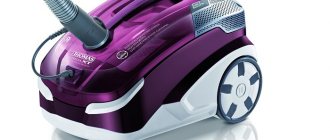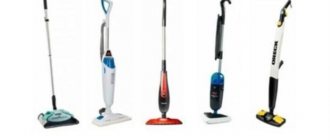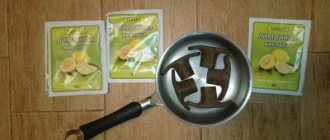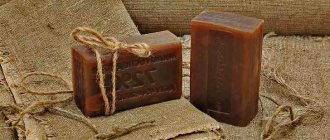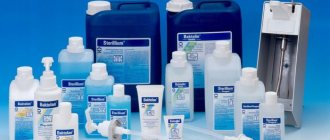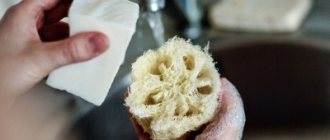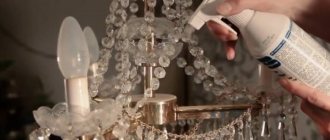Have you decided to put your apartment in complete order, and don’t know how to get rid of old shoe marks on the linoleum in the hallway? Then, before starting work, it makes sense to familiarize yourself with tips and recommendations on how to properly clean linoleum. Otherwise, there is a risk of not only not dealing with the stain, but also aggravating the situation. Which remedies are most effective? Is it possible to use folk remedies for cleaning? Read more below.
Cleaning linoleum
The best way to clean linoleum
Safety is an important aspect of choice
It is important for ordinary consumers choosing a cleaning agent for floors to be careful. After all, not all products are equally effective, and those that have proven themselves well need careful testing and evaluation to eliminate potentially dangerous components in the composition.
- Inhaling the vapors of some products can cause coughing, breathing problems, and even suffocation for allergy sufferers.
- Children are constantly in contact with the floor, playing on a seemingly clean floor with residues of chemical components, they can become poisoned gradually - cumulatively.
- Housewives who are directly involved in cleaning and come into contact with detergents are at the greatest risk. After all, even cleaning with gloves does not guarantee that water containing linoleum cleaner will not get on exposed skin.
- Pet lovers should be no less vigilant, because pets spend most of their time on the floor - sleeping, eating and playing.
Note: for daily cleaning, using clean water is sufficient. Specialized preparations should only be used during general/Saturday cleaning. In addition, you can alternate between washing linoleum with homemade and chemical compounds - a week after a week, for example.
How to remove black streaks from shoes - Useful for housewives - Lifehacks
Shoes with rubber soles have one significant drawback: they leave black streaks on the floor that cannot be washed off during regular wet cleaning. Read how to properly remove them from a variety of surfaces.
Wooden floor
Wipe the surface with a microfiber cloth: its fibers, treated with a special composition, absorb and retain dirt without damaging even waxed or varnished coatings.
Tile
Mix about two tablespoons of baking soda with warm water to form a thick paste. Using a soft cloth, apply this mixture to the dirty area and rub. Then you need to treat the surface with a clean damp cloth and wipe dry.
Laminate
Here you need to act carefully so as not to damage the coating. Try scrubbing away the black streaks using the fluffy side of a dish sponge. Do not wet it so that water does not flow into the laminate at the joints of the boards.
Do not wet it so that water does not flow into the laminate at the joints of the boards.
If you notice an error, select the required text and press Ctrl+Enter to report it to the editors.
Homemade or purchased - what to prefer?
Almost all cleaning products purchased in the store contain questionable components that are potentially hazardous to health. And especially attentive women prefer harmless homemade detergents. Although they require longer use, especially when washing off stains from linoleum, they are completely harmless.
If you look in more detail, the percentage of toxic components is so small that it is unlikely to cause harm even with frequent use. So the choice always remains with the consumer: some will prefer a store-bought linoleum cleaner, while others will be calmer using a homemade “shampoo”.
Be careful with your choice
Manufacturers often present their products as universal, and many consumers, following the lead of advertising, buy the wrong detergent. But flooring of this type is very capricious and can easily become unusable.
- You should immediately exclude from the list of potential purchases products containing small/large abrasive components - after all, micro-scratches, which will later turn into large cracks, will be inevitable.
- Although chlorine-containing mixtures will cope with the task, with regular use they will definitely discolor the linoleum pattern.
- You also need to be careful with hot water - linoleum is likely to swell if it is regularly wiped with hot mixtures of chemicals.
- All purchased compositions must be diluted in the required proportions with water (indicated on the label), since concentrated alkalis/acids will easily destroy the surface and then deeper layers of linoleum.
It is important to know: in order to clean the floor efficiently, it is not enough to purchase an effective linoleum cleaner, since it is difficult to clean the surface with a regular rag without leaving streaks. So you should also take care of choosing a good mop with a comfortable handle holder and a nozzle made of microfiber or a similar porous material.
Complex contamination cases
From time to time you have to clean the floor from difficult stains, especially if there are small children in the house. But even if chewing gum is dropped on the linoleum or candle wax is dropped, the coating can be cleaned, giving it its original appearance. What tools will help cope with this task?
Chewing gum
To remove chewing gum from the coating, you need to freeze it. You can do this by placing an ice cube on it for about 10 minutes, then gently scrape it off with a non-sharp object, such as the blunt side of a knife.
See also
How to get rid of and remove ants from your house and apartment, means to fight them, how to poison them
Wax
Wax can be removed in several ways. Firstly, the dirt is scraped off with a non-sharp spatula, and the residue is washed off with gasoline, then the surface is washed with a soap solution. Secondly, the wax can be heated for easier removal. It is best to do this with a hair dryer, cover the stain with a napkin, and remove the melted wax with the same napkin. If you heat with an iron, there is a risk of damaging the surface of the coating. To prevent this from happening, the floor is covered with a thick layer of napkins, which will absorb the melted wax.
If the wax is colored, then after removing the stain, marks may remain on the linoleum, especially light-colored ones. To remove them, dilute “Whiteness” in water in a ratio of 1 to 10 and wipe the problem area.
Felt pen
You can remove marker marks from linoleum using turpentine or gasoline. To do this, soak a cotton pad with the product and wipe off the dirt, then wash it first with soap and then with a clean cloth.
Rust, mold
You can remove rust and mold from linoleum with lemon juice. The juice is applied to the stain and rubbed with a sponge, then the product is washed off with water.
Ink
The ink is removed with soaked sulfur match heads, rubbing the dirt well with them. Another way is to use fine-grained sandpaper, which you rub very gently on the stain so as not to damage the surface too much. The treated area is rubbed with linseed oil, which does not need to be washed off.
Popular products - advice to consumers
Before purchasing an effective linoleum cleaner, you should pay attention to the features of the floor covering itself. After all, this polymer fabric differs not only in its pattern and thickness, but also in its constituent layers.
- If you have a high-quality surface protective layer, you can buy almost all detergents on the market.
- If there is no protective layer or it is thin, then it is important to select a product with a minimum level of aggressive substances in the composition.
Tip 1: to increase the service life of linoleum, you should personally apply protective components to its surface - immediately after purchase and during operation.
Tip 2: stronger and more durable soft flooring intended for commercial establishments also wears out over time and requires no less high-quality care than its household counterpart. So, when choosing a good linoleum cleaner, it is important to pay attention to its composition and potential aggressive effect on the flooring.
How to care for linoleum?
Many housewives think that linoleum “cannot be spoiled by anything.” This is wrong. Improper cleaning leads to the fact that the appearance of the product deteriorates within 6–12 months after purchase. Therefore, it is important for everyone who values the results of repairs to know how to properly care for their flooring.
Linoleum is a relatively soft material, so it is easily deformed. It is not recommended to place furniture with narrow legs in a room with such a coating, otherwise dents and tears may appear on it. Do not move heavy objects unless they have wheels.
The top layer of material is susceptible to scratches. If crumbs and other small debris are constantly lying on the floor, the surface will quickly wear out. Therefore, linoleum in the kitchen needs to be cleaned every day:
- sweep with a broom or mop with medium-hard bristles;
- vacuum.
In other rooms, dry cleaning is carried out once every 2-3 days, depending on the rate of contamination and the number of residents.
The coating also deteriorates greatly due to small pebbles that people bring from the street on their shoes. If linoleum is laid in the hallway, then it is recommended to place a rug in front of the front door.
Over time, the paint on linoleum fades under the influence of UV radiation. We recommend closing curtains in bright sunny weather.
"Mister proper"
The cleaning composition suitable for cleaning linoleum (other coverings) and walls is packaged in a full liter bottle - it’s nice to see such honesty towards the client from the manufacturer.
- The shelf life is normal for this type of product and is up to 18 months after opening the package.
- Not aggressive in a dissolved state (in the proportions indicated on the package) upon contact with skin.
- It is simple to use - dilute one part of the product (dispenser) in 5 liters of water and wash linoleum/other hard surfaces. You don't have to wash it off.
Reviews: despite the minimal harm caused to the coating, as well as the absence of an obvious strong chemical aroma, and low cost, this product could not win the attention of consumers due to low efficiency. Most of those who tried to wash stains/dirt with this composition had to sweat - it does not work so quickly, it takes a long time to scrub the floor covering.
If we take into account that this is a review of the best products, cleaning linoleum with this product will not be justified. Indeed, in addition to the above disadvantages, it is also difficult to wash off, leaving unpleasant stains.
Comparison of formulations
Having dealt with the characteristics, having studied the cost and customer reviews, the only thing left to do is compare the composition and some other criteria.
You will be interested in: TOP 10 best infrared heater: rating, which one to choose, characteristics, reviews, pros and cons
| Name | Compound | Coverage type | Cost (rubles) | Rating, according to customers' opinions |
| Synergetic “Gentle purity” | Water, green chelates, biodegradable H-tensides/K-tensides | Any | 960 | 5 |
| Mr.Proper “Washing liquid for floors and walls Lemon” | Linalool, fragrances, preservatives, nonionic surfactants | Any | 269 | 4.9 |
| Grass "Floor wash strong" | Water, flavors, dyes, active additives, surfactants | Concrete, asphalt, vinyl and polymer, tiles | 820 | 4.8 |
| Unicum "Laminate" | Purified water, flavor, antimicrobial agent, surface modifier, surfactant | Laminate, parquet | 225 | 4.6 |
| Glorix "Tender Care" | Soap, fragrance, anionic surfactants, nonionic surfactants, sodium hypochlorite | Any | 210 | 4.5 |
| Sanfor "5 in 1" | Silicone, table salt, coloring, flavoring additive | Any | 180 | 4.3 |
| Stork "Green Breeze" | Glycerin, flavoring, dye, cationic surfactants, complexing agent | Any | 89 | 4.2 |
As you can see, most products have a safe composition without chemical additives.
"Stork"
The product (950 ml) of this brand intended for washing linoleum does not have an aggressive effect on the skin (in a diluted state) and does not require special storage conditions.
- The composition contains glycerin, which additionally protects the body from chemical damage.
- In addition to washing, this product has a bactericidal effect - it will be very useful when washing the floor in the hallway.
- It is a universal product - suitable for cleaning all types of floor coverings, as well as walls, tiles/tiles.
- When used under normal conditions, it is enough to simply dilute the substance with water (for 4 liters of water - 1 dispenser cap of the product).
- If it is necessary to spot wash paint/grease, it must be applied undiluted to the treated area and then rinsed off with water.
Reviews: this is, according to most, a very effective product that can easily cope with various types of contaminants. It can be used to clean everything from greasy stains to spilled tea/compote on the floor. The product has a very delicate, unobtrusive aroma.
Using a steam cleaner correctly
When using a steam cleaner for cleaning, you must remember that it can only deal with water-soluble contaminants, such as greasy or limescale deposits, food stains, and street dirt.
Advantages of a steam cleaner:
- environmental friendliness;
- safety;
- does not require cleaning products - savings and health benefits;
- antibacterial effect;
- does not leave scratches or streaks.
The operating principle of any steam cleaner is based on treating a dirty surface with a jet of hot water steam and then removing the softened dirt using a nozzle. Stubborn stains can be pre-treated with acetic acid.
Pronto
This product is suitable for caring for linoleum, tiles and even wood flooring.
- The volume of the bottle contains only 750 ml instead of the usual liter of product.
- The label indicates that the product contains tall oil, which adds shine to surfaces. In fact, it is this additive that requires careful rinsing - this is the only way to completely remove stains from the flooring.
- With a small volume of packaging, the contents are not so economically consumed - for 5 liters of water you will need not the usual 1, but as many as 2 caps of concentrate.
Reviews: not very strong, but an unpleasant chemical smell remains after using this product. It should be used only in extreme cases - when it is necessary to wash away grease stains. This product does not cope well with stains from paints, spilled coffee, or just shoe marks, even in concentrated form.
Cleaning linoleum from marker: methods and tips
Adviсe:
- The water-based marker can be wiped off with water and soapy water.
- Alcohol-based markers can be removed using any alcohol solution or vodka, in which a cotton sponge should be soaked.
- You can wipe off a marker on any base using toothpaste; to do this, apply it to the stain, leave it for a short time, and then wipe it off with a wet napkin. After the procedure, the linoleum is rubbed with polish or linseed oil (then rubbed dry).
Glorix
Despite the fact that this linoleum cleaner has positive reviews, it is the only one whose label indicates precautions for use - protecting hands and respiratory tract from contact. You should immediately think about the safety of its use in everyday life.
- This product is intended exclusively for cleaning linoleum floors. Although the company also offers universal variations - for all types of flooring.
- The shelf life and storage method are standard - store for 18 months out of the reach of children.
- One cap containing 50 ml (total package volume 1 liter) of concentrate must be diluted with 4 liters of water and used for its intended purpose.
- When removing difficult stains, apply the undiluted mixture to the problem area for 5 minutes and then rinse off.
Reviews: the product of this brand has a pronounced aroma, but not strong. Almost all consumers note that the smell of this substance is more reminiscent of a mild cosmetic than a repulsive synthetic one. But it does a poor job of cleaning linoleum – it leaves stains on the surface and does not remove grease well.
"Our mother"
A very effective, expensive product designed for cleaning linoleum, packaged in a 500 ml bottle - a small volume for the price.
- According to the manufacturers, this special product is so safe that it is recommended for cleaning floors in children's rooms.
- Absolutely harmless - it can easily be used without gloves or a respirator, since it is produced on a plant basis.
- It not only cleans extremely effectively, but also disinfects flooring without damaging it or discoloring the pattern.
- It belongs to the universal types of products of this kind - suitable for washing parquet, tiles, etc.
Reviews: the floors simply shine after using this product. According to the majority, this is an ideal product for washing linoleum for shine, which, by the way, does not fade for a long time. It washes off paint and grease equally well, and is also very economical in use. The aroma is generally non-toxic - delicate and floral, almost neutral (exactly what all housewives desire).
It is important to consider: for greater safety and to preserve the health of all family members, it is better not to be lazy and still additionally wash the detergent from the linoleum, even if the manufacturer claims that the liquid does not require rinsing.
Eliminating traces of cement or whitewash
Even plastic film will not protect the floor from whitewash and cement dust. The coating becomes dull, untidy, and covered with stains after washing. Conventional detergents will not cope with this kind of contamination.
It is still possible to restore linoleum; to do this, follow these steps:
- Add 3 tbsp to a bucket of warm water. spoons of kitchen salt, 2 tbsp. spoons of soap shavings. Stir the ingredients until they dissolve, then wash the linoleum thoroughly. Hot water is not suitable for this purpose as it will make the floor dull.
- A solution of potassium permanganate (potassium permanganate) is used to remove stains and plaque. Add a few crystals to a bucket of water to create a light pink solution. Then the floor is washed with a clean cloth.
- If potassium permanganate and salt do not help get rid of the whitewash, then it is recommended to use kerosene. Add 2 tbsp to the bucket. spoons of kerosene and clean the floor covering. The only negative is that after such cleaning, a strong smell of combustible mixture remains in the room. To eliminate the annoying aroma, wash the floor with a weak vinegar solution (2 tablespoons of vinegar per bucket of water). Then the room is ventilated for at least 30 minutes.
Then you can renew the linoleum that has dried out. To do this, a piece of woolen fabric is dipped in linseed oil or drying oil and the surface is polished. After this treatment, the floor becomes shiny.
Homemade recipes – are they worth the time?
In truth, almost any cleaning of linoleum with folk remedies comes down to diluting the same chemical components in a certain volume of water and wiping off the stains with a washcloth/rag. You can often find even tips with minimal effectiveness and recipes that are strictly contraindicated for washing soft flooring.
- What should you not wash linoleum with?
It is not recommended to use solutions with soda when cleaning linoleum coverings from ingrained street dirt, juice, paint (gouache, watercolors). Yes, undoubtedly, small abrasive particles of powder will help to quickly wipe off almost any dirt, but serious damage to the flooring will be caused. The surface layer will immediately become covered with microcracks and scratches, which will later turn into visible abrasions. In these places, the pattern will quickly discolor, and dirt will accumulate even more.
You should beware of aggressive chemical components. If the flooring is contaminated with oil paints/varnishes that are difficult to remove, it is better to purchase the appropriate products in the store. Concentrated solvents, together with stains of paint, will “eat up” the protective layer of linoleum - a whitish, faded spot will remain on the surface.
“Limonka” - a mixture of citric acid, laundry soap and the same soda will produce a similar effect. That is, it will wash away the dirt, but will cause irreparable damage to the soft floor covering.
- Permitted homemade formulations.
Surprisingly, the most common laundry soap worked well. And not brand new white aromatic pieces, but brown bars that are sold even without special packaging and have a very characteristic smell. This solid alkaline product, practically harmless and irreplaceable in everyday life, is grated and diluted in water. You need to wash the entire floor with this soap composition, and simply rub problem areas with a moistened bar of soap. And don't worry about the aroma - it disappears almost immediately.
Another good homemade linoleum cleaner that works great on greasy stains is a regular dishwashing gel. It is applied directly to the greasy stain and immediately washed off with a rag/sponge. The rest, less contaminated floor is washed with a weak solution with the same gel-like mass.
You must understand that any folk remedy in itself is not intended for cleaning floors and will leave behind either stains or soapy patches - it will have to be washed off with additional clean water.
Surface preparation
One of the most important stages of painting linoleum is surface preparation. Surface preparation is carried out in the following order:
- The floor is wiped with a damp cloth.
- The top protective layer of wax is removed. To do this, pour 1 cup of baking soda into a bucket of warm water, then wash the floor with this mixture using a brush. Next, the surface should dry.
- If there are small cracks or torn areas, it is necessary to treat the defects with putty, which is applied in a thin layer. When the floor is dry, you need to apply an acrylic primer or varnish to it.
After this you can paint the floor.
If there are small cracks or torn areas, the defects must be treated with putty.
